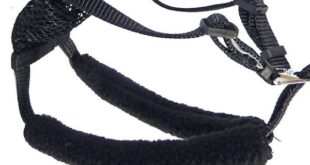Exactly what Dog Collar Do I Need?
Collars for dogs come in a variety of materials, shades, styles and even functions. There is the obedience or choke collar, bark control collars for dogs, flea collars, and a entire array of just good old simple pooch collars. So what type do you choose? If you are having your pooch to a special event or a special gathering and you would like them to look really good attempt getting a fancy dog dog collar and leash. For smaller dogs a simple flat receiver collar will suffice. For greater dogs you might try a prong collar a wide leather music group.
The dog collar market is overloaded with conventional as well as more odd types of dog collars. These provide a variety of functions and needs. Like a pet lover and doggy owner, you should know that different types of dogs need different types of dog collars.
What Type Of Dog Collar Exist?
Buckle Collars are basically just what they sound like, training collars that are fastened with a belt. They are typically made of set or nylon and they are both flat or rolled. Belt collars are usually adjustable and don’t tighten on your pet’s the neck and throat once fastened. Using a folded leather collar avoids the particular chafing or hair busting that can occur using smooth collars.
Quick Release collars for dogs are fundamentally flat synthetic buckle collars with a plastic material closure. This clip is comparable to some luggage strap nails and makes getting the collar off and on a little easier.
Choke stores are metal chain hyperlinks of various sizes with a engagement ring on each. These collars ought to only be used while positively training or exercising your dog. This type of collar is usually offered by length, so request assistance when buying a get collar.
Head collars check out your pets head but are not a muzzle. While wearing a new head collar, your the hound can still pant, start barking, drink and eat, actually bite! They should only be useful for training.
If you have a very limited lead on a dog, typically the strap around the muzzle will certainly push into its eyes, which is as bad as a Halti which pushes into the sight anyway. While some trainers use flat buckle type dog collars, especially on puppies, these kinds of collars do not always supply the most useful control for more unmanageable dogs. For a very hostile dog, the pinch scruff of the neck can actually make the animal even worse.
What Do I Need To Know About Collars for dogs?
You need to ensure that your best friends training collar fits well. Badly fitted training collars and their incorrect usage might be harmful to your pet and in often the worst case it can be fatal. A properly fitted dog collar has at least a 2 finger width space between collar and the neck in the dog but it should not put on over his ears.
Nearby like the sound of clinking dog tags or in case you worry that the metal labels will discolor your pet’s fur, then you can use a unique tag pouch, available at the majority of pet stores.
For searching dogs certain pet traffic monitoring systems allow the dog handler or owner to determine what their dog is doing by using specific behavior systems that contact form part of the collar. You will be able to inform if a pet has halted, is still moving, if a chase is barking, or in case he has treed an animal. Dog tracking collars are used if you are out hunting with your doggy. They can be used by houndsmen, upland bird hunters, beaglers, coon hunters, field trial (bird dogs) and hog looking.
Finally pick a dog receiver collar that suits your pups personality and size. A huge black leather collar together with studs may not suit any toy poodle, or a red ribbon style collar an english Bulldog. After all it is portion of your pet’s image therefore pick the correct one!
 Take the dogs Out #1 Authority Sites for Dogs
Take the dogs Out #1 Authority Sites for Dogs

